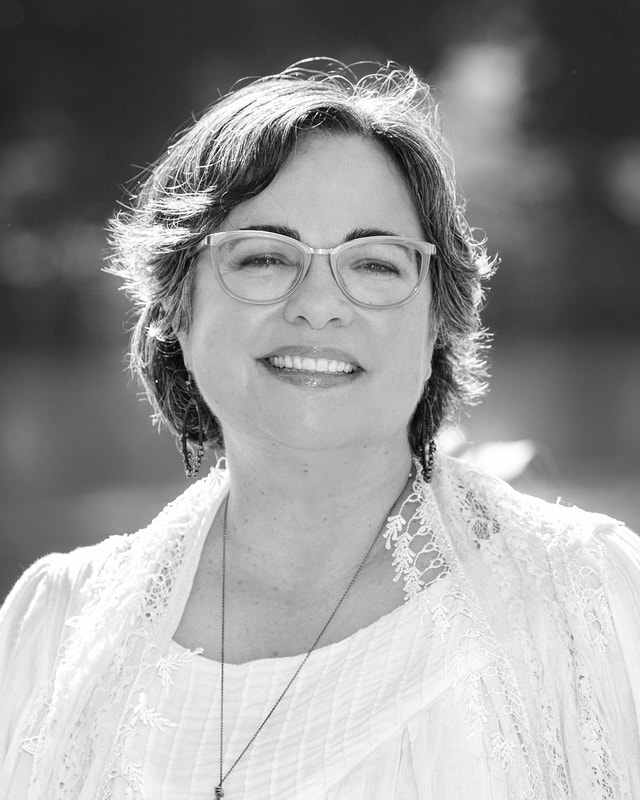|
This week I'll join more than 12,000 other writers and editors, professors, agents and students at an extravaganza called AWP. It's my first one.
I'll bring a small rolling bag and a black daypack to carry snacks, my itinerary, aspirin, some old sweaters, and empty journals. But that's my toolkit, not baggage. The things I will NOT be lugging around (and I was certain that I would):
There is, in fact, very little on the horizon. As though the Universe is sweeping everything from my path, with Infinite Love, and telling me to get to work on the art right under my nose. I feel so untethered. Tomorrow I head north, and plan to go in a state of quiescent listening! 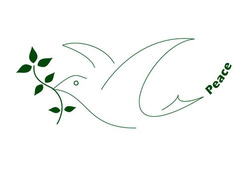 Did you receive holiday cards this year? Are they still around? If you haven’t tossed them yet, here's a meditation exercise that I recently gleaned from a friend's back issue of Spirituality and Health Magazine.* Up until this year, I’ve put cards up on a mantel, or on a large ribbon, and then at the end of the Hanukkah, Solstice, Christmas, Kwanzaa, and New Year season, it was a little sad to just toss those pretty cards into the recycle bin. Sometimes I cut out new gift tags from the fronts. But what I am about to share goes beyond recycling. Save those cards in a basket or bowl. Then, in January, after all the bustle has calmed down and your routines are back, find a few minutes to deliberately put your hand in the bowl and draw out a few cards. Look at just the first one. Spend time really seeing the front, examining the artwork, enjoying the colors and all the careful work that the artist put into it. Then read the printed greeting. Now, if the sender wrote something in it, read what he or she said, and concentrate on the signature. Close your eyes for a few moments and picture that person, maybe that family, in your mind’s eye. Send affection and wishes for their peace and health in the New Year. Thank them, in your thoughts, for sending you the card. When the meditation feels complete, you can release the card (feel free to save some for bookmarks or gift tags). With luck, you might be dipping into your cards a little at a time through the next couple of months. I can scarcely overstate the powerful effect of this meditation. During my first handful of cards, I remembered far-flung loved ones, carefully read their news, pondered the ancient stories portrayed on the card fronts, and even wrote an overdue letter in response. I was also inspired, by one, to visit the UNICEF site and purchase my cards for next season. Even more, as I read the cards I felt my heart growing larger, lighter, and warmer. Closing my eyes over the last card, I felt briefly connected to a larger, energizing galaxy of goodwill. I love how The Happiness Project author Gretchen Rubin talks about maximizing your happiness. Happiness is an inside job, right? Sometimes a wonderful event just flits right by and is swallowed up again—but we, and only we, have the power to make it something more. We can anticipate an event or a treat, we can participate in it, and then we can remember it, perhaps retell it. Multiple joys from one event! This holiday card meditation is a way to turn bits of ephemeral paper and glitter into active happiness. It keeps our little lights shining through the next wintry months. *"Praying My Greeting Cards" by Sister Karen Zielinski, OSF, in Nov-Dec 2010. 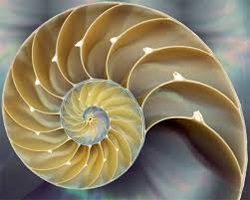 On my way to a Saturday morning study group, I idle at the red light on Winchester. My car faces south toward Los Gatos. My mind is as neutral as my engine. To my right two small silver cars arrive side by side, almost pushing each other out of the way to make their respective turns. The farther car begins to rise, like a gleaming helium balloon, and continues to rise until it is over the nearer car. High in the air it arcs and rolls in a slow, elegant spiral, almost pausing, then plummets on its head on the asphalt in the middle of Winchester. Now I understand the phrase, “scarcely believe my eyes.” The car does not move. I must assume this has happened, not in a waking dream, but in the world. I pull my car over, park, and stumble out to help. It is immediately apparent that I will not be able to open the crushed door, and other people begin to form around the car, so I turn back with shaking hands to find my cell phone. 911 brings forth a busy signal. I try it again, again, again, and five times, the busy signal. At nine on a Saturday morning. But others also hold their cell phones, more beginning to arrive from a nearby café, and one woman appears to be talking, so she has gotten through. Nothing moves inside the car. The morning sky remains blue. The street remains quiet. The driver of that car was in a hurry. What was he, if it was a he, heading toward? Was he coming home from a late night? Was he eager to get to the gym? How did he not see the orange plastic barriers, temporary barriers, to his right, surrounded by neon cones? His mind was preoccupied. He assumed that everything around him would run smoothly so he could think his thoughts unmolested, as we always assume. So much of our lives must run smoothly. Hot water cascades from the shower head. Drivers stay in their lanes. An e-mail is sent and arrives at its destination. For the most part. He assumed that it would not affect the course of his day if he gave into a momentary feeling of impatience by stepping on the accelerator. We do it all the time. People gather around the driver’s side as a police siren grows louder and its lights appear down the street. No one else is on the passenger side to see what I see next. The flattened, upside-down door opens and two legs emerge, tangled in a black seat belt strap. The feet, in white running shoes, touch the ground. Then all is still again. My feet move toward the car. It is a man. This morning he put on faded blue jeans and white shoes. He had been impatient to get somewhere. He meant to go left, or perhaps right. The front tire of his car found contact with the lowest part of an orange plastic barrier, the thinnest edge of the wedge, and obeying the laws of physics, the tire followed its natural path up the vertical slope of the barrier. The tire, the vector, had no choice. The car was perhaps surprised to find itself aloft, so high and quiet against the blue sky of a Saturday morning, perhaps nothing in its manufacture had prepared these tons of metal and glass to float, to float for a full second before the earth pulled it to herself with decisive arms. After a moment, I saw the man emerge, his eyes wide, hand to his white cheek while speaking to the police officer. Had he died I might not be able to describe to you that terrible beauty, that silver car following its path into the air, that arc, that nautilus, that whorl of your soft hair, that silent curve against the morning blue that haunts me even now. 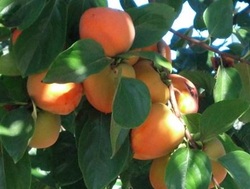 What makes you feel wealthy? I don’t mean measuring the size of your bank account, but the wealth of having enough, the feeling that as long as I have this, I’m OK. One recent emblem of abundance for me has been having a bowl of coral-gold persimmons on my table. Especially when they come from a neighbor’s tree -- they can be expensive in the market! When I see the bowl, I know that I can have a sweet, luscious snack every day if I feel like it, and it will be good for me. The color just makes me smile. I did not know how to eat fuyu persimmons until my friend, Jocelyn, modeled the proper fuyu eating stance. We were having a discussion and I watched as she took a persimmon and a small, sharp knife. She simply carved slices off the persimmon and handed one to me. I was shocked at how good it tasted. The other kind, the Hachiya pictured here, might need a long time to ripen into jelly, and can be eaten with a spoon. Here is the other thing that makes me feel ready to take on the world: I realize how old-fashioned I will sound, but I feel wealthy when I can carry postage stamps in my wallet. Especially those with brilliant pictures on them of dancers or musicians, or wise men and women of history, or flowers. I know I can mail anything on the spur of the moment—an urgent bill perhaps, but more importantly, a fan letter or a thank-you note. I hated it as a child when my Mom made me sit and write thank-you notes after Christmas and birthdays, but now I'm glad she did; years of experience have taught me how simple it is to jot a note, find the address, add a stamp, and pop it into the mailbox. You never know what a huge impact a little letter in the mail can make. As I came to realize how many authors work in a vacuum of silence, just like me, and how their books get published to a little fanfare and then get swallowed up by even greater silence, I realized that fan letters are as important as thank you notes. It was a little intimidating, writing to the first author I admired, but I am so glad I did. She sent me a brief reply on a postcard that showed a watercolor painting of a French bakery. Nourishing indeed! I think stamps mean so much to me because of times in the past when I was traveling and did not have the money to eat more than once every couple of days. I really wanted to send a letter to my family, but did not have the postage, let alone enough to place an international call. So yes, my wallet contains two sleeves of stamps. And I have clean, warm socks on my feet. I feel like a million dollars, and I think I’ll go eat a persimmon. 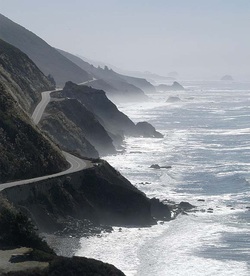 I am packing up my woolly long-sleeved things and getting ready to head down the Pacific Coast to take a five day workshop around spiritual practices. See this photo? That’s what I’ll be looking at, unless Divine Humor sends fog and rain instead. I’m trying not to interfere with life’s grand unfolding by inserting expectations about how it will be. Still, I am giddy with excitement. A retreat! And not a silent retreat, and not a retreat where I have to sit much longer than an hour. My desperate needs to move and talk would make me a lousy Trappist. Why this now? I think I am hoping to bring something home in my pocket. I want to bring home a more solid prayer-and-meditation practice. When I worked in a corporate environment the regular hours lent themselves better to a daily practice. But in grad school, writing another book and attending meetings upon meetings, Monday looks nothing like Tuesday. Last week is different from this week, and in several weeks the schedule will change again. In this environment, attaching practices to a specific hour is a misguided venture. I take heart from swaying grasses on the sides of a swift river. The stems bend to wind and water and it doesn't matter; their roots hold firm. I know by now that I like to split the practice itself into two parts. The rhythm two parts is both restful and productive. There’s the beginning of the day, where the essential action is to connect to my power source. It doesn’t have to be fancy. But I do have to be willing and active about it. The second part might be called, “How did I do?” In remembering the day I get a chance to relive all the good parts--that's double the joy! And I can ask for help around the not-so-good. Without this afternoon/evening part, I’m on permanent forward thrust without a rudder. And would it hurt to add a couple of sun salutations every day? Maybe a stronger, more solid yet easily portable practice will emerge from this workshop, maybe it won't. At least I've spent some time thinking about my intention for going, and later this evening, if I remember to remember, I'll get to relive that little piece of joy. 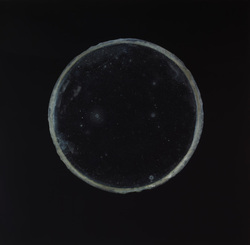 I confess I have been stymied this past week as to what to write. None of my wedding topics seemed right, and I didn’t want to pull out a rerun yet. But for the first time I was blocked. Why? Perhaps it is because I am suffering from a terrible case of In-between-ness. After thirteen months of steady work, I have completed one thing, The Book (about weddings). And not yet started the next thing. Soon the big push to publicize The Book will commence, but right now it is completely out of my hands. No-one from the publisher has requested anything for days. Copy editors are reviewing the manuscript, and in a conference room somewhere an editor and a sales expert are hashing out the title. So I don’t even know what to call The Book yet. More shall be revealed. I am sure that one morning I will be called to hit the ground running. In the meantime, cloudless days come and go, my daughter jets back to her school life, and I struggle to reorient myself. Writers have told me that the best antidote for post-book insanity is to start another book. Now I viscerally understand what they mean, and I agree. Publicity will bend my sanity. Good reviews and bad reviews and NO reviews will whack my ego all out of joint. The only joy I can count on is in the process of working through another book, and perhaps finishing that one, too. Earlier this week I pulled about thirty resource books from my library and planned a sprawling, intergenerational saga, complete with geology and recipes. This book may yet arise, and I honor that, but something else happened and my path diverted. It diverted so much from the original that I replaced my sourcebooks back on their shelves. This new path fills me with excitement, wonder, and terror. So I think I am onto something genuine. But I can’t talk about any of it just yet. During my travels in South India in 2009, I became acquainted with a goddess who has become perhaps my favorite. Her name is Aditi, and she is very, very old. “Mother of all the gods” is one description. Wikipedia says she is associated with space, and with mystic speech. You can buy little cards with pictures on them of Lakshmi, Durga, Saraswati, even Kali, but there seems to be no traditional portrait of Aditi, the unfettered, the boundless one. She has been symbolized sometimes by a cracked earthenware pot, and sometimes by an empty mirror. Aditi governs the margins, the space between dark and dawn, the in-between times. I think that now is my fertile, awkward, wordless and uncomfortable Aditi time. Guess I will go find a cracked vessel and look at it. |
|
